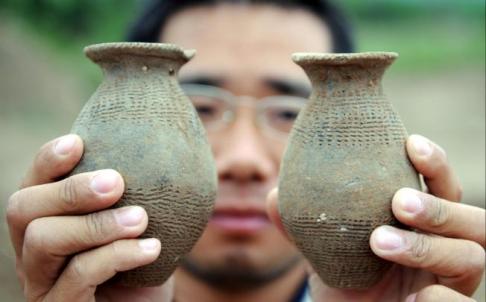The new evidence suggests a connection between the southern and northern regions, which are some 1,500 kilometres apart, the study says.
"Painted pottery and jars with single or double handles are similar to those typical of the Qijia culture," Jin said as she read the findings at the Fifth World Conference of the Society for East Asian Archaeology.
Jin speculates that some northerners such as the Qijia people, who grew crops, and made pottery and bronze, could have migrated south in search of warmer climes. "This most likely has to do with climate changes some 5,000 years ago," she said. "Temperature dips in northwest China around 3,000BC may have driven the local inhabitants to warmer places."
One possible scenario is that early migrants completed a daunting journey to Yunnan that spanned hundreds of years, on a trail that covered mountain ranges and waterways, according to Jin. She theorises that the Qijia people followed this trail, which eventually led to Haimenkou.
The earliest wheat grains found at the excavation site date to 200 years after the Qijia culture died out in Gansu, suggesting that it took many generations before these prehistoric refugees reached their destination.
However, some researchers cast doubts on the theory.
Zhao Jianlong, of the Gansu Province Institute of Archaeology in Lanzhou, called the idea of a mass migration through the southwest's forbidding terrain implausible.
"Can you imagine these sedentary crop growers - not nomads - traversing hundreds, even thousands of kilometres? I just don't see it," said Zhao, who was not part of the study.

Zhao is leading a group of archaeologists in Gansu in a project to save valuable artefacts from excavation sites in Yongjing county that are in the way of a high-speed rail line being built to link Lanzhou and Urumqi. Pottery fragments attributed to the Qijia have been found at these sites.
Early human migration may have been more common and frequent than Zhao is prepared to believe. Artefacts and plant remains found in valleys leading all the way to Yunnan mark a possible route for some of these movements.
"The eastern edge of the Tibetan Plateau was buzzing with traffic in the Neolithic [period] to the Bronze Age," said Professor Zhao Zhijun, director of archaeobotanical studies at the Chinese Academy of Social Sciences, who was also not involved in the Peking University study.
